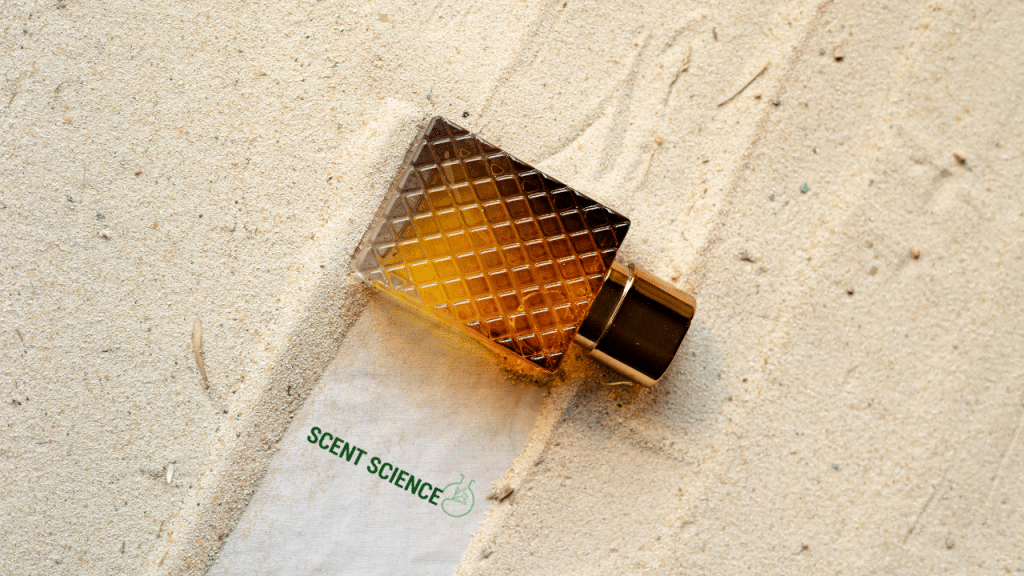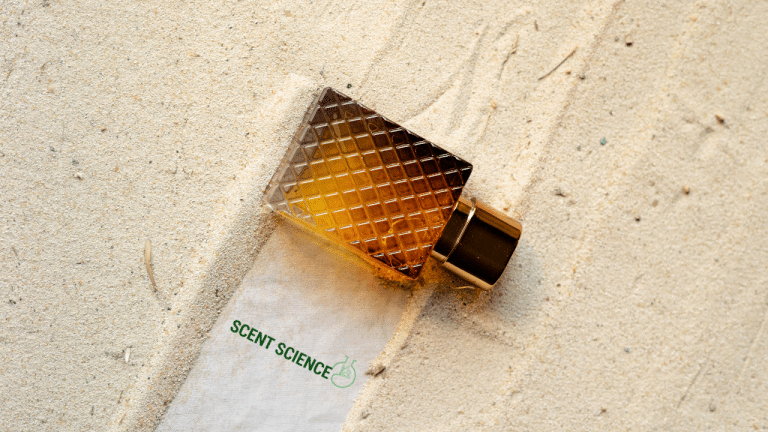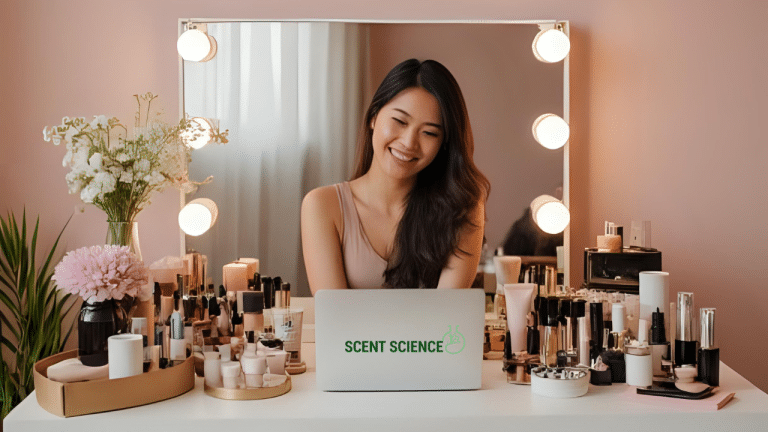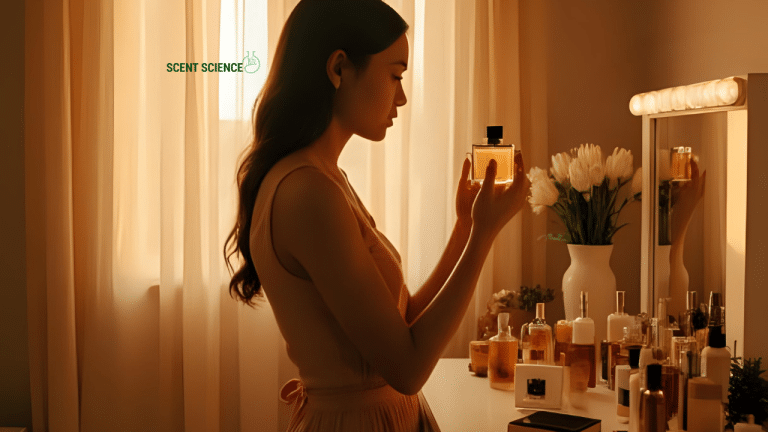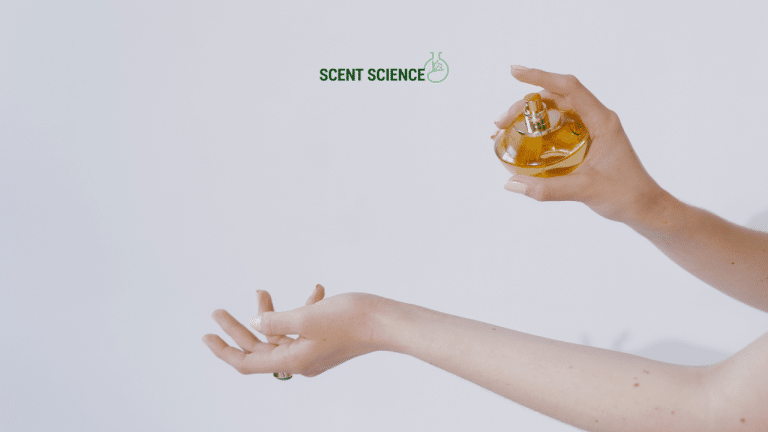A single wild agarwood tree takes 20+ years to develop oud-producing infections and costs $50,000+ per kilogram, but bioengineered fragrance ingredients created in 30 days now exceed natural oud in purity, consistency, and olfactory complexity. This intersection of traditional craftsmanship and cutting-edge technology highlights how bioengineered fragrance ingredients are revolutionizing luxury fragrance while saving endangered species.
Market transformation reshaping the fragrance industry:
- Global bioengineered fragrance ingredients market reaching $2.8 billion by 2027, powered by advancements in AI in fragrance development, enhancing production techniques and ingredient innovation.
- Lab-grown oud production costs reduced dramatically compared to wild harvesting
- Bioengineered sandalwood eliminates decades-long tree maturation waiting periods
- Synthetic biology shows near-perfect molecular accuracy in fragrance creation
- Major luxury houses investing heavily in fragrance biotechnology development
Revolutionary advantages of laboratory-created scent molecules:
- Molecular precision impossible to achieve through natural extraction methods
- Elimination of batch-to-batch quality variations inherent in natural ingredients
- Protection of endangered species from unsustainable overharvesting practices
- Year-round production independence from seasonal and climate factors
- Enhanced safety profiles removing natural allergens and environmental contaminants, which is vital for AI perfume personalization tailored to individual needs.
Table of Contents
ToggleThe Science Behind Bioengineered Fragrance Creation
Bioengineered fragrance ingredients represent a convergence of molecular biology, chemistry, and perfumery that produces aromatic compounds with unprecedented precision and quality control. This innovative approach is at the forefront of the AI fragrance technology revolution, which integrates artificial intelligence into the development process to further enhance olfactory experiences.
Molecular Engineering Fundamentals
Core technologies driving bioengineered fragrance ingredients:
- Synthetic biology programs microorganisms to produce specific target fragrance molecules through genetic modification
- Fermentation optimization maximizes yields of aromatic compounds using controlled biological processes
- Genetic pathway design creates novel fragrance molecules that don’t exist in nature, highlighting the role of AI fragrance design in crafting unique scents
- Bioreactor scaling expands production from laboratory milliliters to commercial volumes
Quality Control and Purity Advantages
Superior characteristics of bioengineered fragrance ingredients:
- Molecular consistency ensures identical composition across all production batches
- Contaminant elimination removes unwanted compounds naturally present in plant extracts
- Allergen removal creates hypoallergenic versions of traditionally sensitizing ingredients, a key factor in AI perfume personalization for crafting scents tailored to individual sensitivities
- Potency optimization concentrates desired aromatic compounds for enhanced performance
The precision of biotechnology allows scientists to create bioengineered fragrance ingredients that exceed the quality and consistency achievable through traditional natural extraction methods, offering new possibilities for AI vs. human perfumers in scent creation.
Advanced Production Technologies
Cutting-edge systems supporting bioengineered fragrance ingredients:
- Cell culture systems grow fragrance-producing plant cells in completely controlled laboratory environments
- Enzyme engineering optimizes biological pathways specifically for aromatic compound synthesis, advancing the AI in fragrance development landscape
- Metabolic pathway manipulation directs cellular resources toward maximum fragrance molecule production
- Precision fermentation controls every environmental variable affecting ingredient quality
Lab-Grown Oud: Surpassing Millennia of Natural Development
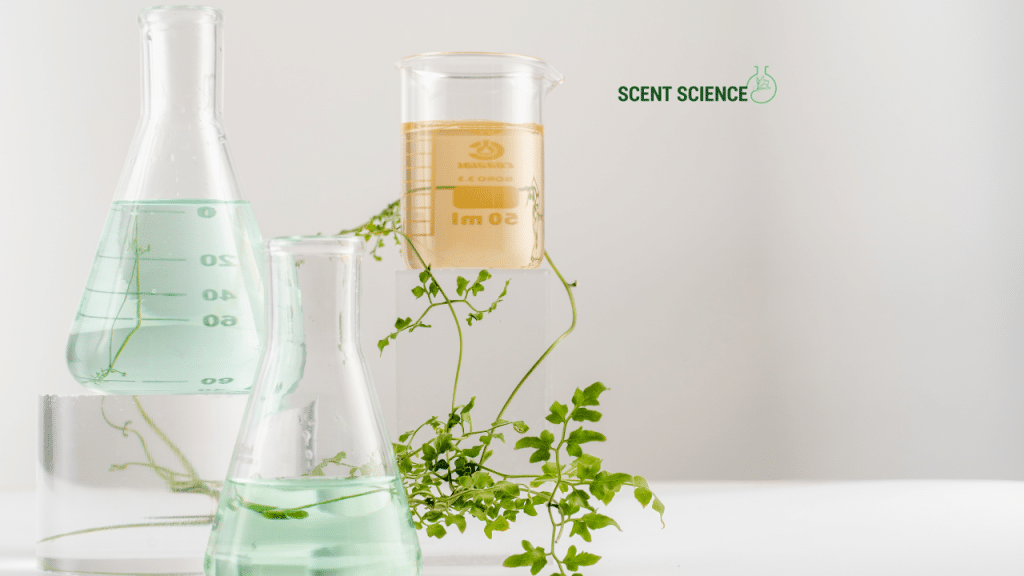
Lab-grown oud represents perhaps the most dramatic success story in bioengineered fragrance ingredients, solving sustainability crises while delivering superior olfactory performance. With the integration of AI technologies, these innovations ensure that AI-powered sustainable fragrances are not just a concept but a reality, offering a new horizon for the fragrance industry.
The Natural Oud Crisis
Critical challenges facing traditional oud production:
- Extinction threat affects wild agarwood trees from severe overharvesting across Southeast Asia
- Quality inconsistency creates dramatic variations by geographic region, tree age, and infection type
- Price volatility causes wild oud costs to fluctuate between $30,000-$50,000+ per kilogram
- Sustainability impossibility makes current consumption rates completely unsustainable for wild populations
- Adulteration problems result in high-value natural oud frequently mixed with inferior materials
Bioengineered Oud Advantages
Revolutionary benefits of lab-grown oud over natural alternatives:
- Molecular perfection ensures pure aromatic compounds without environmental contaminants or variations
- Consistency guarantee provides identical composition and olfactory profile across every production batch
- Enhanced complexity optimizes specific aromatic molecule ratios impossible to achieve naturally
- Safety assurance eliminates potential allergens and toxic compounds present in wild oud
- Cost accessibility reduces production expenses significantly compared to wild oud harvesting
Production Process Innovation
Advanced techniques creating superior lab-grown oud:
- Genetic sequencing analyzes oud-producing fungal infections for precise laboratory replication
- Controlled infection simulation recreates natural processes in optimal laboratory environments
- Accelerated aging processes develop complex aromatic profiles in weeks rather than decades
- Purity refinement extracts only desired compounds for optimal fragrance performance and longevity
- AI-driven processes utilize artificial intelligence to optimize fermentation and extraction for perfumers and algorithms alike
Synthetic Sandalwood: Engineering Perfection
Synthetic sandalwood exemplifies how bioengineered fragrance ingredients can surpass natural materials in every measurable quality metric. This technological triumph is propelled by mood-based fragrance development, which is increasingly seen as the future of olfactory customization, leading to innovative creations like mood-based scents.
Natural Sandalwood Limitations
Significant constraints of traditional sandalwood production:
- 15-30 year maturation periods required before trees produce commercially viable aromatic oils
- Geographic restrictions limit high-quality sandalwood to specific climate regions with suitable soil
- Harvesting sustainability requires complete tree death for oil extraction, preventing regeneration
- Quality variations create inconsistent sandalwood quality depending on climate and growing conditions
- Export regulations impose strict international trade controls severely limiting global availability
Bioengineered Sandalwood Breakthroughs
Superior performance characteristics of synthetic sandalwood:
- Instant production delivers laboratory sandalwood ready for use in 30-60 days versus decades
- Enhanced purity achieves 99%+ pure santalol content compared to 90% in premium natural sandalwood
- Olfactory superiority optimizes aromatic compound ratios impossible to achieve through natural growth
- Allergen-free formulation removes sensitizing compounds naturally present in traditional sandalwood oils
- Unlimited scalability provides production capacity unconstrained by tree availability or geographic factors
- AI integration uses algorithms to perfect fragrance components, enhancing viral scent hack fragrance science
Technical Production Advantages
Sophisticated biotechnology creating superior synthetic sandalwood:
- Yeast engineering programs microorganisms to produce sandalwood’s characteristic aromatic molecules
- Fermentation control optimizes temperature, pH, and nutrients for maximum aromatic compound yield
- Molecular isolation separates pure aromatic compounds from fermentation byproducts and impurities
- Quality standardization ensures consistent performance characteristics across all production batches
- AI-assisted monitoring ensures continuous quality through AI perfume personalization techniques
Industry Adoption: Luxury Brands Embracing Biotechnology
The luxury fragrance industry has rapidly embraced bioengineered fragrance ingredients as leading houses recognize their superior performance and sustainability benefits. This shift is part of a larger movement toward integrating AI into fragrance production, where technology and tradition blend seamlessly to enhance olfactory artistry.
Luxury Pioneers in Bioengineered Fragrance
Major investments driving bioengineered fragrance ingredients adoption:
- Givaudan commits substantial resources to biotechnology fragrance ingredient development programs
- Firmenich partners with Ginkgo Bioworks for advanced synthetic biology fragrance creation
- IFF acquires multiple biotech companies specifically for ingredient innovation capabilities
- Symrise develops proprietary fermentation systems for luxury ingredient production
- AI collaborations with tech innovators are enhancing AI in fragrance development to create bespoke luxury scents
Brand Integration Success Stories
Successful bioengineered fragrance ingredients implementation across luxury brands:
- Tom Ford incorporates lab-grown oud in limited edition collections while maintaining luxury positioning
- Creed integrates synthetic sandalwood without compromising traditional brand heritage or premium pricing
- Maison Margiela features biotechnology ingredients transparently in their innovative Replica fragrance line
- Le Labo communicates openly about bioengineered fragrance ingredients in clean, sustainable formulations
- AI-driven personalization allows brands to offer scents tailored to individual preferences, such as through custom scent design
Consumer Acceptance Challenges
Market education required for bioengineered fragrance ingredients acceptance:
- Luxury perception requires overcoming negative associations with “synthetic” terminology
- Transparency communication educates consumers about biotechnology benefits and superior performance
- Performance demonstration proves quality advantages through blind testing and comparative analysis
- Sustainability messaging emphasizes environmental protection and species conservation benefits
- AI integration highlights AI perfume creation as a bridge between tradition and innovation
Environmental and Sustainability Impact
Bioengineered fragrance ingredients provide unprecedented environmental benefits while delivering superior performance compared to traditional natural ingredients. This eco-friendly approach is further enhanced by AI technologies, which optimize resource use and minimize waste, ensuring a sustainable future for the fragrance industry.
Species Conservation Benefits
Critical conservation advantages of bioengineered fragrance ingredients:
- Agarwood tree protection eliminates harvesting pressure on critically endangered wild populations
- Sandalwood preservation reduces demand for slow-growing tree harvesting and habitat destruction
- Biodiversity protection prevents ecosystem disruption from intensive natural ingredient overharvesting
- Habitat conservation reduces deforestation pressure in fragrance ingredient producing regions worldwide
- AI-enhanced conservation strategies promote sustainable practices through AI-powered sustainable fragrances
Carbon Footprint Reduction
Environmental efficiency of bioengineered fragrance ingredients production:
- Transportation elimination enables local production versus global natural ingredient sourcing and shipping
- Processing efficiency requires significantly less energy than traditional extraction and purification methods
- Waste reduction achieves precise production eliminating byproduct disposal and environmental contamination
- Resource optimization utilizes controlled environments requiring minimal water and land compared to agriculture
- AI-driven resource management maximizes efficiency and minimizes environmental impact through AI revolution
Circular Economy Integration
Sustainable practices in bioengineered fragrance ingredients manufacturing:
- Renewable feedstock utilizes agricultural waste for fermentation processes rather than virgin materials
- Biodegradable production creates environmentally safe compounds that break down naturally
- Waste utilization converts production byproducts into useful materials for other industrial applications
- Sustainable scaling provides growth potential without corresponding environmental degradation
- AI-enhanced circular practices ensure continuous improvement in sustainable manufacturing through AI advancements
Quality Comparison: Lab vs. Natural Performance
Bioengineered fragrance ingredients consistently outperform natural alternatives across multiple objective quality measurements and subjective evaluations. This excellence is further amplified by AI’s ability to refine and perfect scent profiles, setting new standards for olfactory precision.
Olfactory Performance Metrics
Measurable superiority of bioengineered fragrance ingredients:
- Longevity testing shows biotechnology ingredients lasting 15-25% longer than natural equivalents
- Projection analysis demonstrates laboratory compounds projecting 20% further than traditional ingredients
- Evolution consistency maintains stable scent development throughout wear time
- Blending compatibility ensures bioengineered fragrance ingredients mix more predictably in complex formulations
- AI-driven optimization enhances fragrance blending for superior mood-based fragrance experiences
Safety and Tolerance Improvements
Enhanced safety profiles of laboratory-created ingredients:
- Allergen elimination removes common sensitizers naturally present in plant-derived materials
- Skin compatibility shows improved dermatological testing results compared to natural alternatives
- Consistency reliability eliminates adverse reactions from batch-to-batch natural variations
- Purity advantages provides bioengineered fragrance ingredients free from environmental contaminants
- AI-enhanced safety profiles use data-driven approaches to ensure optimal safety and skin compatibility
Professional Evaluation Results
Industry recognition of bioengineered fragrance ingredients superiority:
- Perfumer preferences show master perfumers choosing laboratory ingredients for precision and reliability
- Blind testing outcomes demonstrate consumers unable to distinguish superior synthetic versions from natural
- Industry awards recognize bioengineered fragrance ingredients winning fragrance innovation competitions
- Technical analysis confirms molecular superiority through gas chromatography and mass spectrometry
- AI integration highlights the future of AI-driven fragrance design as a benchmark for quality
Production Process Deep Dive
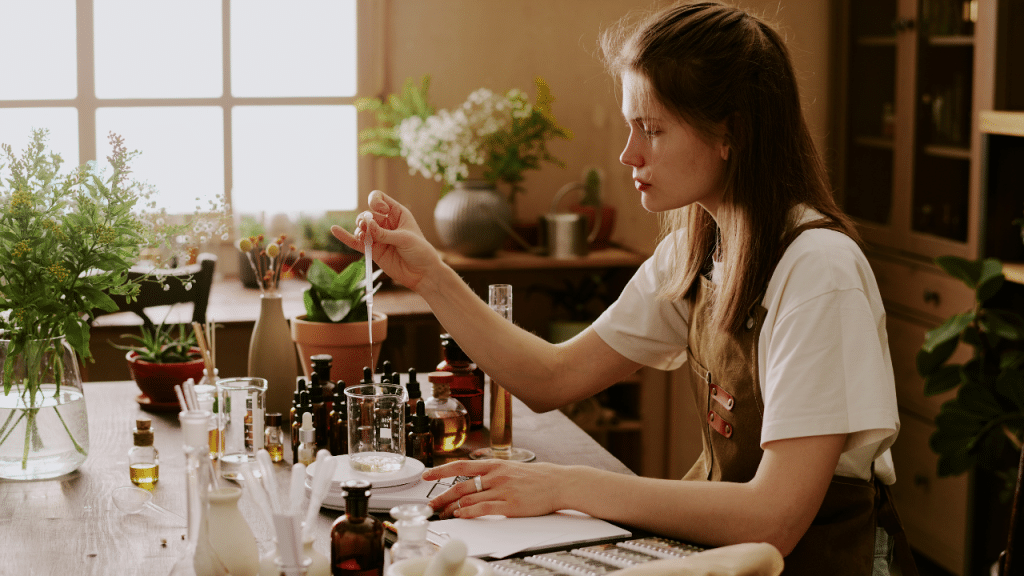
Understanding the sophisticated biotechnology behind bioengineered fragrance ingredients reveals why laboratory-created compounds achieve superior quality and consistency. This technological advancement is further supported by AI, which enhances process precision and efficiency, leading to groundbreaking results in fragrance creation.
Laboratory Setup Requirements
Infrastructure supporting bioengineered fragrance ingredients production:
- Controlled environment systems maintain precise temperature and humidity for optimal biological processes
- Bioreactor technology scales production from laboratory milliliters to industrial volumes
- Quality monitoring equipment ensures molecular consistency throughout entire production cycles
- Safety containment protocols manage biotechnology processes safely according to regulatory standards
- AI-enhanced systems integrate AI fragrance technology for continuous production optimization
Step-by-Step Production Process
Comprehensive biotechnology workflow for bioengineered fragrance ingredients:
- Genetic engineering programs microorganisms with fragrance-producing genetic capabilities
- Fermentation initiation starts controlled biological processes under optimal environmental conditions
- Monitoring and optimization adjusts parameters continuously for maximum aromatic compound yield
- Extraction and purification isolates pure fragrance molecules from complex fermentation medium
- Quality testing and certification verifies molecular structure and olfactory performance standards
- AI-driven adjustments fine-tune processes for optimal results, supporting AI perfume creation
Innovation Frontiers
Next-generation technologies advancing bioengineered fragrance ingredients:
- AI-directed fermentation uses machine learning to optimize production parameters automatically
- Novel compound creation designs entirely new aromatic molecules impossible to find in nature
- Hybrid technologies combine multiple biotechnology approaches for enhanced results
- Continuous production develops non-stop manufacturing systems for improved efficiency
- AI-enhanced innovation continues to drive the future of scent creation
Economic Impact and Market Transformation
Bioengineered fragrance ingredients are fundamentally reshaping the economics of luxury fragrance production and global supply chains. The integration of AI into this domain not only enhances production efficiency but also paves the way for more resilient and adaptive market structures.
Cost Structure Revolution
Economic advantages transforming fragrance production:
- Production cost reduction achieves 80-90% lower expenses than natural ingredient harvesting
- Price stability eliminates volatility from natural resource scarcity and geopolitical factors
- Supply security guarantees availability independent of climate conditions and political situations
- Quality consistency reduces waste from batch-to-batch natural variations requiring reformulation
- AI-enhanced cost efficiency ensures optimal resource allocation through AI fragrance design
Investment and Development
Financial commitment to bioengineered fragrance ingredients innovation:
- Venture capital funding totals billions invested in fragrance biotechnology startups recently
- Corporate R&D spending sees major fragrance houses allocating significant budgets to biotechnology
- Patent activity shows dramatic increases in bioengineered fragrance ingredients intellectual property
- Facility construction includes new biotechnology production facilities opening globally
- AI-driven investments highlight a growing trend in AI-powered fragrance innovations
Market Disruption Potential
Industry transformation through bioengineered fragrance ingredients:
- Traditional supplier impact forces natural ingredient suppliers to adapt business models
- New company emergence enables biotechnology startups to challenge established industry players
- Investment reallocation shifts capital from natural sourcing to laboratory production capabilities
- Geographic decentralization moves production closer to fragrance manufacturing centers
- AI-driven market shifts redefine industry landscapes through innovative AI applications
Future Innovations and Developments
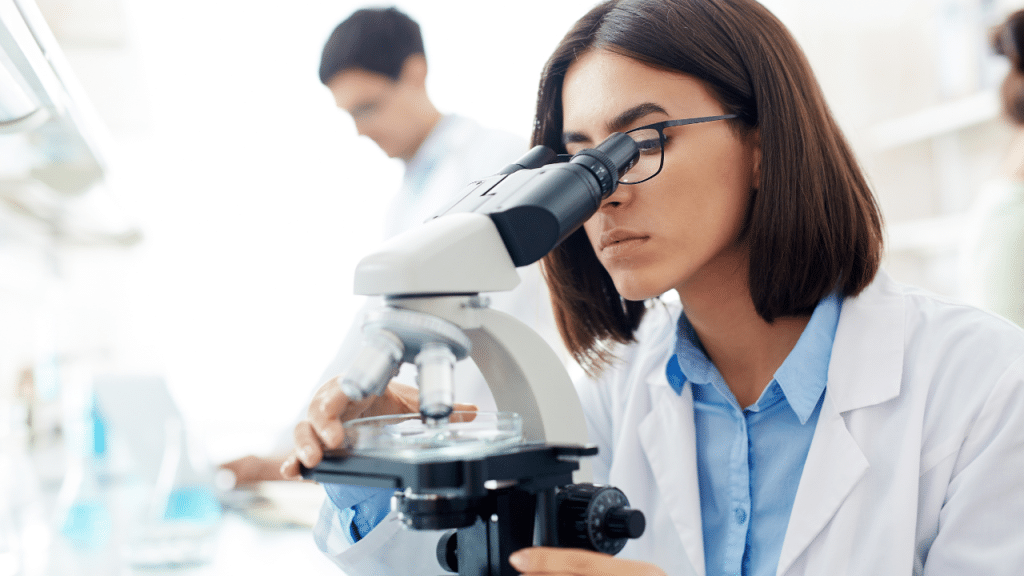
The future of bioengineered fragrance ingredients promises even more revolutionary advances that will further transform luxury fragrance creation and consumer experiences. With AI playing a pivotal role in these developments, we are entering an era where scents are not only crafted with precision but also tailored to meet evolving consumer demands.
Next-Generation Technologies (2025-2027)
Emerging innovations in bioengineered fragrance ingredients:
- Quantum biology utilizes quantum effects to optimize molecular design for enhanced aromatic properties
- AI-designed fragrances employs artificial intelligence to create entirely novel aromatic compounds
- Personalized biotechnology develops custom fragrance molecules based on individual genetic profiles
- Real-time production enables on-demand fragrance creation for immediate consumer use
- AI-enhanced personalization offers fragrances tailored to individual scent preferences
Long-term Vision (2028+)
Revolutionary applications for bioengineered fragrance ingredients:
- Home biotechnology provides personal fragrance production devices for consumer use
- Molecular gastronomy creates edible fragrance ingredients through advanced biotechnology
- Medical applications develops therapeutic fragrance compounds for health and wellness benefits
- Space applications enables fragrance production for long-term space missions and colonization
- AI-driven exploration pushes the boundaries of what’s possible in fragrance creation
Industry Transformation Timeline
Projected adoption rates for bioengineered fragrance ingredients:
- 2025 expects significant portions of luxury fragrances containing biotechnology ingredients
- 2027 anticipates majority of new fragrance launches featuring synthetic biology components
- 2030 projects most premium ingredients produced through biotechnology methods
- 2035 envisions complete transformation to sustainable bioengineered fragrance ingredients industry
- AI-driven timelines ensure seamless integration of AI technologies into the fragrance industry
Frequently Asked Questions About Bioengineered Fragrance Ingredients
Are bioengineered fragrance ingredients safe for sensitive skin?
Yes, often safer than natural ingredients because biotechnology can remove allergens and contaminants that naturally occur in plant-derived materials while maintaining aromatic properties.
Can perfumers tell the difference between bioengineered and natural ingredients?
In many cases no – advanced bioengineered fragrance ingredients are molecularly identical to natural ones, and sometimes perform better in complex formulations.
How long does it take to develop a new bioengineered fragrance ingredient?
Development typically takes 6-18 months from concept to production, compared to decades required for natural ingredient cultivation and harvesting.
Will bioengineered ingredients make fragrances more expensive?
Initially yes for development costs, but long-term production costs are significantly lower, potentially making luxury fragrances more accessible to consumers.
Are bioengineered fragrance ingredients regulated differently than natural ones?
They follow the same safety regulations as traditional ingredients, often with additional biotechnology-specific oversight for production processes and quality control.
Transform Luxury Fragrance Through Scientific Innovation
Bioengineered fragrance ingredients represent the future of sustainable luxury, where scientific precision meets olfactory artistry to create experiences impossible through traditional natural ingredients. From lab-grown oud that surpasses millennia of natural development to synthetic sandalwood that optimizes molecular perfection, biotechnology is revolutionizing every aspect of fragrance creation.
The transformation extends beyond mere ingredient substitution – bioengineered fragrance ingredients enable entirely new possibilities for perfumers while protecting endangered species and reducing environmental impact. As major luxury houses invest heavily in biotechnology, consumers gain access to fragrances with superior performance, consistency, and safety profiles.
Embrace the future of fragrance innovation by exploring perfumes featuring bioengineered fragrance ingredients. Whether seeking the complex beauty of lab-grown oud or the refined elegance of synthetic sandalwood, biotechnology delivers luxury experiences that honor both olfactory tradition and environmental responsibility.
Continue exploring fragrance innovation on ScentScienceBeauty.com
Follow us on Social Media for more!
Because the most beautiful fragrances are those that enhance both personal expression and planetary preservation.

